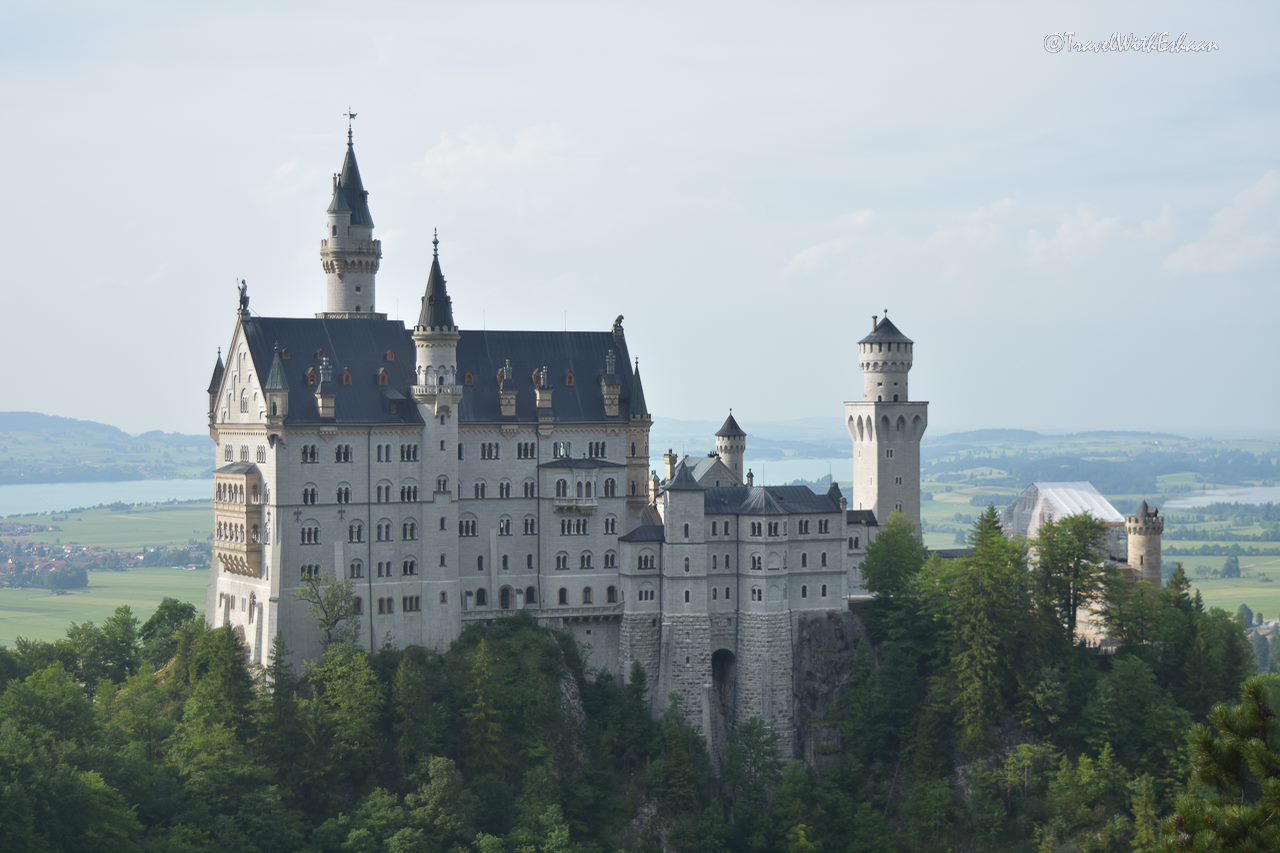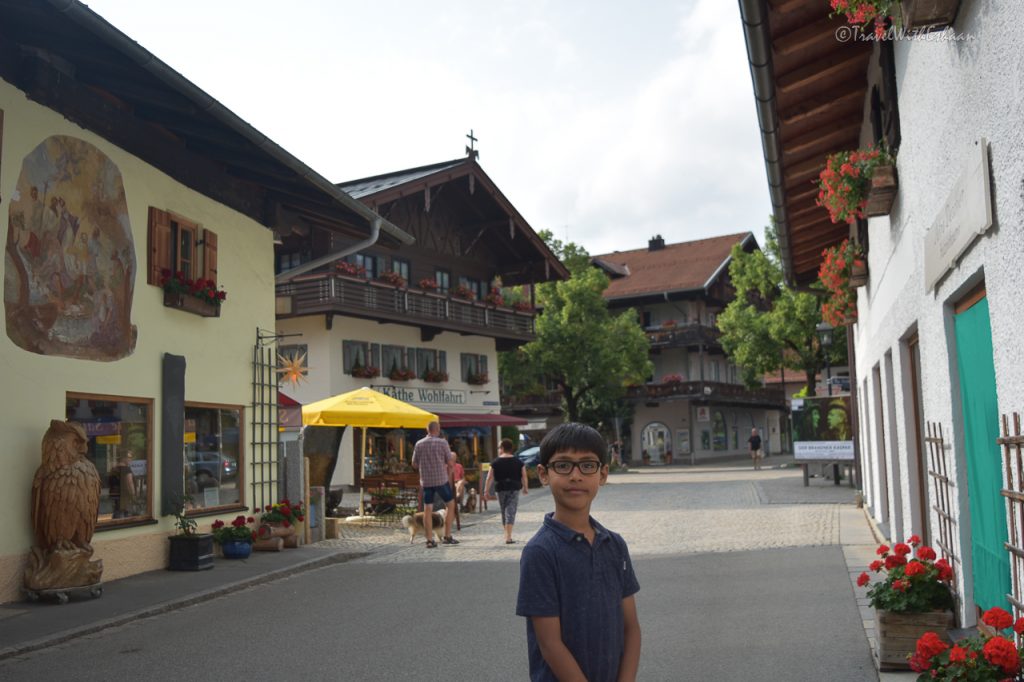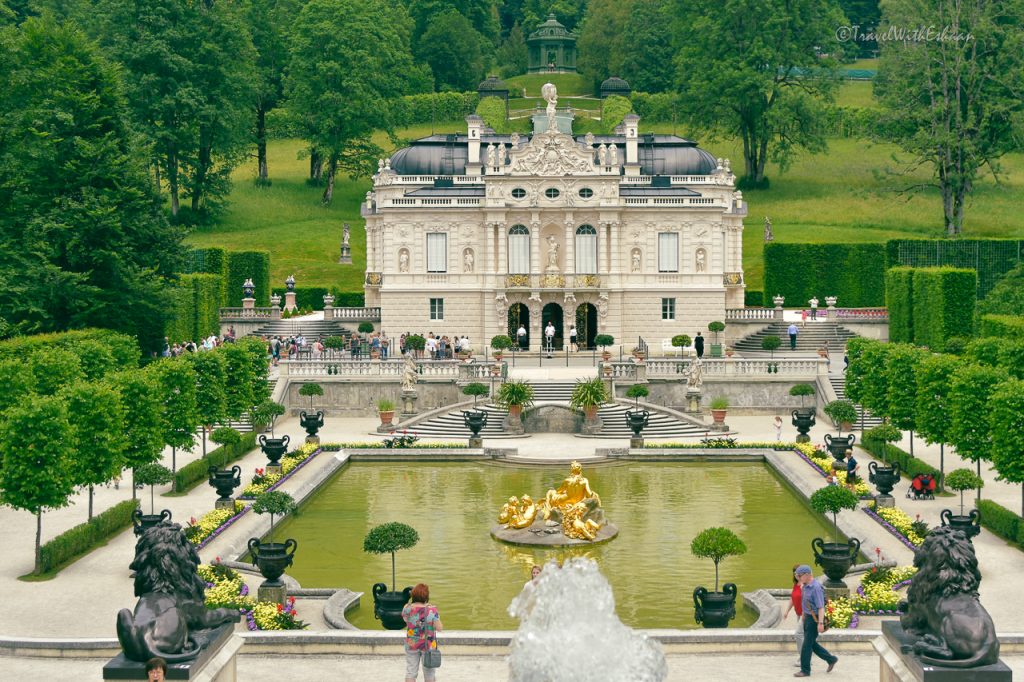
Other than America, Germany is the nation we spent the longest amount of time in. For three years straight: 2016 all the way to 2018, I’ve visited the nation. So let’s cut straight to the chase: Our first trip to Germany was to two places in Germany: Berlin, which we visited for most of the trip, and Dresden, a day trip. Our second trip was basically everywhere in Germany except for East Germany, and Hamburg. We visited Munich, Frankfurt, Cologne, all of the Romantic Road (a route with many castles), and most of South Bavaria. Our final trip to Germany was in 2018. It wasn’t on purpose, but due to a mishap. We visited Stuttgart in Germany, and Colmar and Strasbourg in France.
Our trip in 2016 began at Reykjavik. We were using the budget Wow! Airlines, which was extremely convenient for our trip. We arrived at the Berlin Airport, and then took the metro to the Airbnb in which we were staying. Having never seen a full fledged metro system, it was amazing to see how every stop in the metro was like a mini-mall combined with a train station. After walking a few blocks, we arrived at the Airbnb, which was in East Berlin. It was a plain apartment building on the outside, but the inside was kitted out. My dad put the luggage in the Airbnb. If this were any other trip, we would’ve probably rested or done something less strenuous for the first day, but instead we decided to walk a full kilometer of the Berlin Wall.
If I had only one remark about the wall, it would be “meh”. I was six at the time, so I didn’t realize the impact of the wall, how many lives it tore apart, or even why we were visiting. If I was interested in one thing, it would be the other side of the wall, West Berlin, where I saw skyscrapers towering over the Spree River. Come to think of it, those might’ve been the same thoughts of the people who tried to cross the wall those many years ago.
On the walk, we also saw the Mercedes Benz Arena, as well as graffiti featuring topics from Checkpoint Charlie to the people killed trying to escape. Afterwards, we went to a memorial dedicated to the Berlin Wall. Again, the significance was lost on me at that age.
The next day, we went to the Holocaust Memorial. I didn’t know what the Holocaust was, but the memorial educated me enough. We saw what symbolized the tombs of millions who were killed during the Holocaust. The tombs were slabs of concrete, getting higher and higher, until they towered above me.
If I really understood what happened, and why the memorial existed, I wouldn’t have enjoyed the memorial so much. Ignorance is bliss.
The same day, we also visited Brandenburg Gate, which I wasn’t too impressed with. It was just a few pillars holding up a few horses, after all. I enjoyed the Reichstag, because I could easily comprehend the tour guide talking about how the modern dome of the Reichstag and the old base symbolized old and new. After that, we walked around Berlin, and we even stopped at the Berlin Legoland.
The next day, we visited Dresden. Dresden is a city that was famously destroyed in World War Two, but unlike Rotterdam, some artifacts have been preserved. The place I enjoyed the most was the Elbe riverfront, where I relaxed and saw planes, boats, and cars. We also visited the Holy Cross Church. It is a completely black building with a copper dome and golden cross. The definite best sight was the Dresden Frauenkirche, which doesn’t just sound like Dresden Frankenstein. It actually is a beautiful church. A base with a huge dome with another bell tower on top of it, surrounded by four minor towers, all of it a light, sandy tan. The inside of the church was an amazingly fancy combination of huge organs, gilded everything, and white marble roofs.
We also went to Zwinger, a sort of palace. It has an onion dome on top that looks like a crown, so we took a picture that looked like the dome was on my head. Then we went back to Berlin for the night. We would go to Vienna the next day, and it would be a few days until we returned to Berlin. We only spent a day there, which we spent in Szczecin, Poland. I enjoyed eating at the German Burger King, because they serve vegetarian food. We went to Szczecin on a Flixbus, another of Europe’s great transportation methods (especially for shorter distances). It only cost 10 Euros, which was around the same price of the hot chocolate we bought before.
The trip ended the next day, when we departed from Berlin Airport. Our next visit was the next year, when we landed in Frankfurt from Istanbul. We didn’t do much the first day, just sleeping and relaxing. Again, jet lag can be tough. The day after, we visited Heidelberg Castle. Heidelberg is very close to Frankfurt. To give a succinct summary, it would be great views, old brown castle, and big ruins. We could see the half destroyed brick castle, which looked like a town without its roof. From the castle, we got a great view of Heidelberg, a picture-perfect city with a river running through it. It would be the first of many castles we would visit. It was also the most destroyed of all the castles we’ve visited. For the rest of the day, we continued on the drive. The best part of the drive was the autobahn. No speed limit, just speed. My dad hit 160 kilometers per hour. We arrived at Andech, a small fairytale town. Almost all of rural Germany looks like it could be in a fairytale, and this isn’t a coincidence, since the Brothers Grimm were German.
The next day, we went to the BMW museum. BMW is headquartered in Munich, and so we wanted to check it out. The outside of the BMW museum is very unique, because it looks like two giant spring tubes fused together. We took photos at the BMW, sat in cars, looked at cars, and saw the features of cars. My favorite part was a car driving simulator. I can proudly say I failed.
The next day, we visited Andechs Abbey, recommended by our Airbnb host. Andechs Abbey is a beautiful little church overlooking Andechs, which is a beautiful town in of itself. My dad drank beer, while we ate. It was a fun experience.
The next day, we went to Nymphenburg Palace. Nymphenburg Palace is located in Munich, and it is relatively new. It hasn’t been damaged, and therefore looks like an upscaled version of an estate. Imagine a house with a big center and two wings. Make it fancy. Now put around forty windows on the front. You’ve got Nymphenburg Palace.
Afterwards, we visited the rest of Munich. We first went to the New Town Hall, a building just like Prague’s New Town Hall, because they both looked like 17th century cathedrals instead of modern town halls. The New Town Hall is contrasted with the Old Town Hall, a white building with two main towers. One is tall and with a pyramid top, and the other isn’t a tower, it’s just the stepped top of the building. We then walked through some parks until we reached the English Gardens, where my dad drank beer. That wasn’t the interesting bit. What was interesting was the building itself, which looked like a pagoda.
The next day began at Andechs, where we took photos of the Alps. The huge mountains towering over the landscape never get old. The drive there wasn’t close to a bore, since about every 20 kilometers, a castle would come into view. We wouldn’t always get the best view because our car would be speeding on the autobahn. We then went to Neuschwanstein Castle, which famously inspired Cinderella Castle. Honestly, though, I felt like 99% of his inspiration was his own imagination, because the castle itself, though beautiful with its many towers that stretched out like a wall over a pleasant farm backdrop, didn’t scream Cinderella. Instead it was unique in a special way. Neuschwanstein is also completely overrated. If it weren’t for Disney, the castle would be 90% emptier, and that would be for the better. The inside is incomplete, so we didn’t go there, and the famous viewing point from which most photos of the castle are taken is so crowded, you might fall off. Instead, there is a lesser known hike from across the viewing point. If you take the small five minute walk, you get an unparalleled view of the castle, which might just be worth the time. We then went down the hill Neuschwanstein is located on, and took pictures of its neighbor, Hohenschwangau instead. It is a mustard yellow castle the size of a hotel. If it weren’t for the walls and the towers on all four sides, it would be mistaken for one.
We would be spending a lot of time around the Austria-Germany border for the next few days. In Austria, we visited Lake Plansee, and Hallstatt, while in Germany, we visited Linderhof Palace in Ettal, which isn’t very big or impressive. The best part of the palace was easily the gardens, which were lush, and made for a great picture with the flowers. After that, we visited Ettal Abbey, which is a double-winged church with a huge dome and a copper top. We also visited the monastery, and Oberammergau, which is a town where the walls are literally painted. This is like the equivalent of the roads being paved in gold, if wealth was happiness. It was a beautiful place. Slowly, we phased out to Austria, and we didn’t see Germany for a few weeks.
Our trip was going in a ring route, from and to Frankfurt, so it was predetermined that we were going to visit Germany again. We arrived in Cologne, our next destination, from the Netherlands. Before visiting the Cologne Cathedral, however, we went through the city. We bought Eau de Cologne, and looked around the modern streets. In one of the biggest squares, I could see it. The Cologne Cathedral. A hulking brown masterpiece of the Renaissance that stretched above human comprehension. It wasn’t the height of one or two or three people. It was almost the height of the Eiffel Tower, rising over modern skyscrapers. It defined the limit, the high point of their architecture, because it was the high point. There were two twin towers, similar to the Notre Dame, except these towers rose up to spikes culminating in crosses. Huge windows let light into the behemoth, though we never entered it.
We then returned to our Airbnb, which was located in a place called Koblenz. Another small town we were staying in was a German house used for Ayurvedic retreats. It had a small bed dominating the second floor, and another on the ground. We slept, and the next morning, after a small stay in Koblenz, we began our drive back to Frankfurt. On the way, we stopped at the confluence of the Moselle and the Rhine, where we looked at the shipping vessels. Many goods on the Rhine originated in places such as Kiev, and through the complex connection of rivers naturally and through canals, they arrived in places such as Rotterdam.
After that adventure, we went to the Frankfurt airport, where my sister and I had fun at the playground. We would return to Germany unintentionally. Our car was broken into, we had to cancel our trip to the Balkans, and instead, we went to Germany, where we could get a replacement car. We did surprisingly little in Germany, only visiting Stuttgart. There we toured both the Porsche and Mercedes Benz museums. We began at the Mercedes-Benz Museum. On the way, we saw the Mercedes-Benz Arena, for the second time. There are too many Mercedes-Benz arenas.
The Mercedes-Benz Museum was definitely the more interesting of the two museums. Benz was the maker of the modern automobile, so we got to see some of the oldest cars in existence. The older the cars got, the more they looked like horseless carriages. That’s how you know your car is seriously old. That, and because it goes at 6 mph tops. The most awkward part of the whole tour was the part going over the Nazi Regime, and how Mercedes-Benz helped the Nazis. It was an interesting experience.
But to experience the true range of supercars, and to see the top of the line cars, we would have to go somewhere else: the Porsche Museum, which hosts some of the best cars in the world. I’m talking about Formula One cars capable of going on loops. These cars win races. There was this sick simulator, where through virtual reality, you could simulate driving. On a real car. It was the second driving simulator in a car museum I’d taken in the last year. It makes sense, however. It’s hard to come up with ideas for an interactive car museum.
From beautiful mountainous Bavaria, to the industrial car making cities of the Ruhr, to the deep history of Berlin, I recommend you to visit the nation.
Tips:
- Take the hiking route in Neuschwanstein. It will save so much time and energy, and you’re guaranteed the best shot.
- Car museums: Most car museums are extremely exciting, with interactive games, simulations, and above all, race cars. If nothing else, you can see the most exquisite, fancy cars on Earth.
- From a tourist’s perspective, there are two major regions of Germany: Historical, urban, and industrial East Germany, and beautiful fairytale Bavaria.
- Germany is easy to get around by car, due to its autobahns and well maintained roads.


